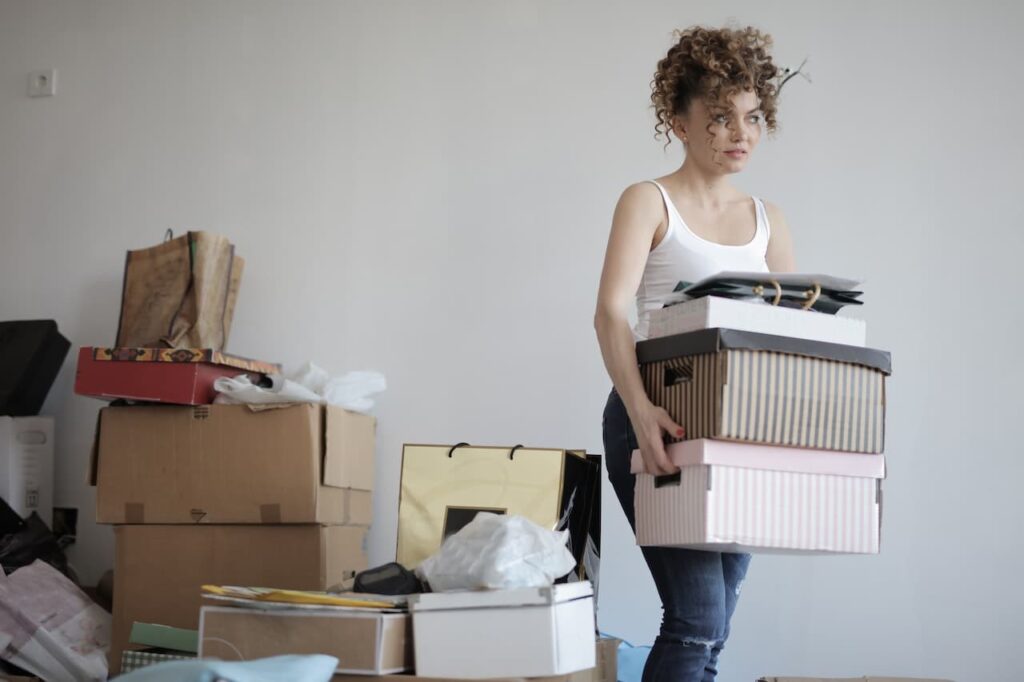Feeling buried under piles of stuff and don’t know where to begin? You’re not alone. Decluttering when overwhelmed can feel like scaling a mountain, but with the right approach, it’s entirely manageable. This guide offers practical, actionable steps to help you start decluttering, regain control, and create a calmer, more organized space. By breaking the process into bite-sized tasks and focusing on small wins, you’ll transform your home without the stress. Let’s dive into how to start decluttering when you feel overwhelmed, with strategies designed to make the journey approachable and rewarding.
Why Decluttering Feels Overwhelming
Before diving into solutions, it’s helpful to understand why decluttering feels so daunting. Recognizing the root causes can empower you to tackle the challenge with confidence.
Emotional Attachments to Possessions
Many of us hold onto items because they carry sentimental value or represent memories. Letting go can feel like losing a piece of your past, which makes decluttering emotionally taxing. Acknowledging these feelings is the first step to moving forward.
Decision Fatigue
Decluttering involves countless decisions—what to keep, donate, or discard. When you’re already overwhelmed, this mental load can paralyze progress. Simplifying the decision-making process is key to getting started.
Cluttered Spaces, Cluttered Mind
A messy environment can amplify stress, making it harder to focus. The chaos around you mirrors the chaos in your mind, creating a cycle of overwhelm. Fortunately, small changes can break this cycle and spark momentum.
Practical Steps to Start Decluttering When Overwhelmed
The good news? You don’t need to overhaul your entire home in one go. These practical steps will help you ease into decluttering without feeling swamped.
Step 1: Start Small and Specific
Instead of tackling an entire room, focus on a tiny area, like a single drawer or a corner of your desk. This approach builds confidence and prevents burnout. For example:
- Clear out one kitchen drawer.
- Sort through a single shelf in your closet.
- Organize a small pile of papers on your desk.
By starting small, you’ll see quick results, which motivates you to keep going.
Step 2: Set a Timer
Overwhelm often stems from feeling like decluttering will take forever. Combat this by setting a timer for 10-15 minutes. Work on one area during that time, then stop. This technique, often called the Pomodoro method, keeps the task manageable and prevents fatigue. You’ll be surprised how much you can accomplish in short bursts.
Step 3: Use the Four-Box Method
To streamline decision-making, grab four boxes or bags labeled:
- Keep: Items you use regularly or love.
- Donate: Things in good condition that others could use.
- Trash: Broken or unusable items.
- Relocate: Items that belong elsewhere in your home.
This method simplifies choices and keeps you organized as you sort.
Step 4: Tackle One Category at a Time
Instead of decluttering by room, try sorting by category, like clothes, books, or kitchen items. This approach, popularized by Marie Kondo, helps you see the full scope of what you own. For example, gather all your clothes in one place before deciding what to keep. This prevents duplicates and ensures consistency.
Mindset Shifts to Ease Decluttering Stress
Decluttering isn’t just about physical stuff—it’s also about your mindset. These mental shifts can make the process less overwhelming.
Focus on Progress, Not Perfection
You don’t need a Pinterest-perfect home. Aim for a space that feels functional and calming for you. Celebrate small victories, like clearing a countertop, rather than stressing about unfinished areas.
Let Go of Guilt
Many people feel guilty about discarding gifts or unused items. Remind yourself that letting go doesn’t diminish the item’s value or the sentiment behind it. Donating usable items can give them a new life, which feels rewarding.
Visualize Your Ideal Space
Take a moment to picture how you want your home to feel—calm, spacious, or inviting. Keeping this vision in mind can motivate you to let go of items that don’t align with your goal.
Tips to Stay Motivated While Decluttering
Keeping your momentum going is crucial when decluttering feels overwhelming. These tips will help you stay on track.
Reward Yourself
Celebrate your progress with small rewards, like a coffee break or a favorite show after a decluttering session. Positive reinforcement keeps you engaged.
Declutter with a Friend
Invite a friend or family member to help. They can offer an objective perspective and make the process more enjoyable. Plus, they might help you laugh through tough decisions.
Schedule Regular Decluttering Sessions
Consistency beats intensity. Set aside 15-30 minutes a few times a week to declutter. Over time, these short sessions add up to big results without overwhelming you.
Common Decluttering Mistakes to Avoid
As you start decluttering, watch out for these pitfalls that can derail your progress.
Buying Organizing Supplies Too Soon
It’s tempting to buy cute bins or storage solutions, but wait until you’ve decluttered. You might not need as much storage as you think once you’ve let go of excess items.
Trying to Do It All at Once
Tackling your entire home in one weekend is a recipe for burnout. Pace yourself with small, consistent efforts for sustainable progress.
Keeping “Just in Case” Items
Holding onto things you might need “someday” often leads to clutter. If you haven’t used it in a year, consider letting it go. Trust that you can replace it if needed.
How to Maintain a Clutter-Free Space
Once you’ve started decluttering, the next challenge is keeping your space tidy. These habits will help you maintain your progress long-term.
Adopt the One-In, One-Out Rule
To prevent clutter from creeping back, adopt a simple rule: for every new item you bring into your home, remove an old one. This keeps your possessions in balance and encourages mindful purchasing.
Examples of the One-In, One-Out Rule
- Buy a new pair of shoes? Donate an old pair.
- Add a new book to your collection? Pass one on to a friend.
- Get a new kitchen gadget? Recycle an unused one.
Create Designated Spaces
Assign a specific place for every item in your home. For example, keep keys in a bowl by the door or store paperwork in a labeled folder. When everything has a home, it’s easier to stay organized.
Review Your Space Regularly
Set a monthly or quarterly reminder to do a quick decluttering sweep. Check for items that no longer serve you and address small messes before they grow. This proactive approach keeps overwhelm at bay.
Decluttering for Mental Clarity
Beyond creating a tidy home, decluttering can boost your mental well-being. A clear space often leads to a clearer mind.
Reduce Visual Noise
Cluttered spaces can overstimulate your brain, making it harder to relax. By removing excess items, you create a calmer environment that supports focus and peace. Try clearing surfaces like tables or countertops for an instant sense of calm.
Practice Gratitude for What You Keep
As you declutter, focus on appreciating the items you choose to keep. This mindset shift, inspired by minimalism, helps you value quality over quantity and reduces the urge to accumulate more.
Quick Gratitude Exercise
- Pick one item you love, like a favorite mug or book.
- Reflect on why it brings you joy or serves a purpose.
- Use this feeling to guide what you keep or let go.
Decluttering when overwhelmed doesn’t have to be a daunting task. By starting small, using strategies like the four-box method, and adopting a positive mindset, you can make steady progress without stress. Maintaining a clutter-free space with habits like the one-in, one-out rule ensures your efforts last. Plus, the mental clarity that comes from a tidy home is a powerful motivator to keep going. Ready to take the first step? Set a timer for 10 minutes today and tackle a small area, like a drawer or shelf. You’ll be amazed at how these small wins transform your space and mindset.



